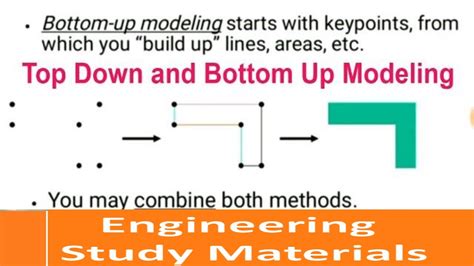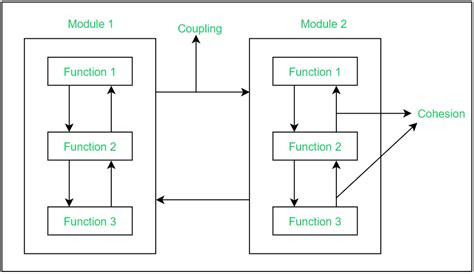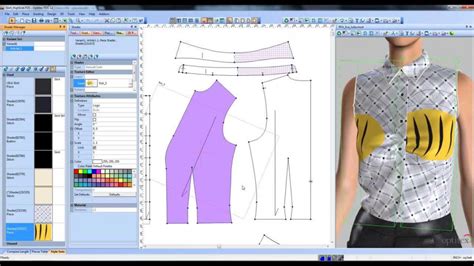In the realm of software engineering, component design plays a crucial role in the development of robust and scalable software systems. It involves breaking down a complex system into smaller, reusable, and independent components, which can be individually developed, tested, and maintained. This blog post aims to delve deep into the concept of component design in software engineering, exploring its importance, benefits, best practices, and challenges.
1. Definition and Importance:
Component design refers to the process of designing individual software components that can be integrated to form a complete system. These components are self-contained and encapsulate specific functionalities, making them reusable across multiple projects. The key importance of component design lies in its ability to enhance software maintainability, reusability, and scalability.
2. Benefits of Component Design:
i. Reusability: Components designed in software engineering can be reused in various projects, saving development time and effort. This reduces redundancy and promotes efficiency.
ii. Maintainability: Isolating functionalities within components allows for easier maintenance and debugging. Teams can work on specific components without affecting the entire system.
iii. Scalability: By breaking down a complex system into smaller components, it becomes easier to scale the software as per changing requirements. New components can be added or existing ones modified without affecting the entire system.
iv. Testing: Components can be individually tested, ensuring their reliability before integration. This facilitates thorough testing and quality assurance, leading to a more robust system.
3. Design Principles and Best Practices:
i. Cohesion: Components should have high cohesion, meaning that they should encapsulate logically related functionalities. This ensures that each component has a clear purpose and is focused on a specific task.
ii. Loose Coupling: Components should be loosely coupled, meaning that they should have minimal dependencies on other components. This allows for flexibility, easier maintenance, and enhances reusability.
iii. Interface Design: Components should have well-defined interfaces, specifying the input and output parameters. This promotes interoperability and enables components to be easily integrated into various systems.
iv. Standardization: Following standard design patterns and guidelines ensures consistency and compatibility across components. It also facilitates better collaboration among developers.
4. Challenges in Component Design:
i. Granularity: Determining the optimal size of components can be challenging. Components should neither be too large, leading to complexity, nor too small, resulting in excessive inter-component communication.
ii. Dependency Management: Managing dependencies between components can become complex, especially in large-scale projects. Tools and techniques like dependency injection can help alleviate this challenge.
iii. Upward Compatibility: Ensuring compatibility between newer versions of components and existing systems can be difficult. Versioning and thorough testing are essential to address this challenge effectively.
5. Component Design Patterns:
i. Composite Pattern: This pattern allows components to be combined into tree-like structures, treating individual components and composite structures uniformly.
ii. Factory Pattern: This pattern provides an interface for creating components without specifying their concrete classes, promoting loose coupling and flexibility.
iii. Observer Pattern: This pattern establishes a one-to-many relationship between components, allowing them to notify and react to changes in each other’s state.
Conclusion:
Component design is a fundamental aspect of software engineering that greatly influences the quality and scalability of software systems. By breaking down complex systems into reusable components, software engineers can achieve higher reusability, maintainability, and scalability. However, challenges such as determining the optimal granularity and managing dependencies must be overcome. By adhering to design principles and patterns, these challenges can be addressed effectively. Component design empowers software engineers to develop robust, flexible, and easily maintainable software systems.
We hope this blog post has provided you with valuable insights into component design in software engineering. Have you encountered any challenges or implemented specific design patterns in your projects? We would love to hear your experiences and thoughts in the comments below.
Please leave a comment and share your thoughts on component design in software engineering.
Component design: getting cohesion right – Software Engineering …
Jul 15, 2013 … After discussing this with colleagues and getting a line of advise from Robert C Marin himself, I settled for the following satisfactory … – softwareengineering.stackexchange.com

design – Software Engineering Stack Exchange
Dec 10, 2012 … The terms are similar. I generally think of a “module” as being larger than a “component”. A component is a single part, usually relatively … – softwareengineering.stackexchange.com

Component Level Design | Definition, Types & Examples – Video …
Feb 23, 2022 … COM/DCOM, JavaBean, and .NET are a few examples of software components that advantageously reduce development times and costs, as well as … – study.com

Front end component design principles | by Andrew Dinihan | CAMS …
Nov 1, 2018 … Physically interacting with your code base is part of software engineering, and sometimes some basic organisational principles can really make … – engineering.carsguide.com.au

Component-Level Design: Definition & Types – Video & Lesson …
Jan 25, 2022 … Remember, a component is the basic building block of the software and that there are two main types of classes. First, analysis classes can be … – study.com

Low Level Design In Software Engineering
Low Level Design In Software Engineering Introduction Software engineering is a complex field that requires careful planning and meticulous attention to detail. One crucial aspect of software development is low level design. Low level design involves the creation of detailed specifications for indiv – drawspaces.com

Top Down And Bottom Up Design In Software Engineering
Top Down And Bottom Up Design In Software Engineering In the world of software engineering design plays a crucial role in creating robust and efficient software systems. Two popular approaches to software design are top-down and bottom-up design. These approaches offer different perspectives and met – drawspaces.com

Modular Design In Software Engineering
Modular Design In Software Engineering Introduction In the fast-paced world of software engineering modular design has emerged as a key concept that allows developers to build complex systems while maintaining flexibility and scalability. With the increasing demand for efficient and maintainable sof – drawspaces.com

Procedural Design In Software Engineering
Procedural Design In Software Engineering In the world of software engineering design plays a crucial role in determining the success of a project. One popular design approach is procedural design which focuses on breaking down a system into smaller manageable procedures or functions. These procedur – drawspaces.com

What is the component design?
Component design. Component design is a type of software design and architecture. The component-based architecture focuses on breaking the software design into … – www.educative.io

Definition Of Design Engineering
Definition of Design Engineering: Innovating Solutions for a Dynamic World Design engineering is a multifaceted field that combines creativity technical expertise and problem-solving skills to create innovative solutions. From product design to infrastructure development design engineers play a cruc – drawspaces.com

Software Pattern Design
Software Pattern Design: Creating Efficient and Scalable Solutions In the ever-evolving world of software development finding efficient and scalable solutions is crucial. This is where software pattern design comes into play. Software pattern design refers to a set of proven solutions to common prog – drawspaces.com

Best Cad Software For Fashion Design
Best CAD Software For Fashion Design: Revolutionizing the Industry Fashion design has evolved significantly in recent years thanks to advancements in technology. One such innovation that has revolutionized the industry is Computer-Aided Design (CAD) software. CAD software enables fashion designers t – drawspaces.com

Design Process For Engineering
Design Process For Engineering Introduction Design is a crucial aspect of engineering as it involves creating solutions to complex problems and bringing innovative ideas to life. The design process for engineering encompasses a series of stages that engineers follow to develop successful products sy – drawspaces.com

Graphic Design Free Software
Graphic Design Free Software Canva: Visual Suite for Everyone Canva is a free-to-use online graphic design tool. Use it to create social media posts presentations posters videos logos and more. /a /p !– /wp:paragraph — /div !– /wp:column — !– wp:column {width:20%} — div class=wp-block-column s – drawspaces.com

Design Process In Engineering
Engineering Process Design Engineering Design Process The engineering design process is a series of steps that engineers follow to come up with a solution to a problem. Many times the solution to a problem involves … /a /p !– /wp:paragraph — /div !– /wp:column — !– wp:column {width:20%} — di – drawspaces.com

Technical Cores/Components | Texas ECE – Electrical & Computer …
Software Engineering and Design. Covers the engineering life cycle of software systems, including requirement analysis and specification, design … – www.ece.utexas.edu
Component-Based Architecture
A software component can be defined as a unit of composition with a contractually specified interface and explicit context dependencies only. That is, a … – www.tutorialspoint.com
